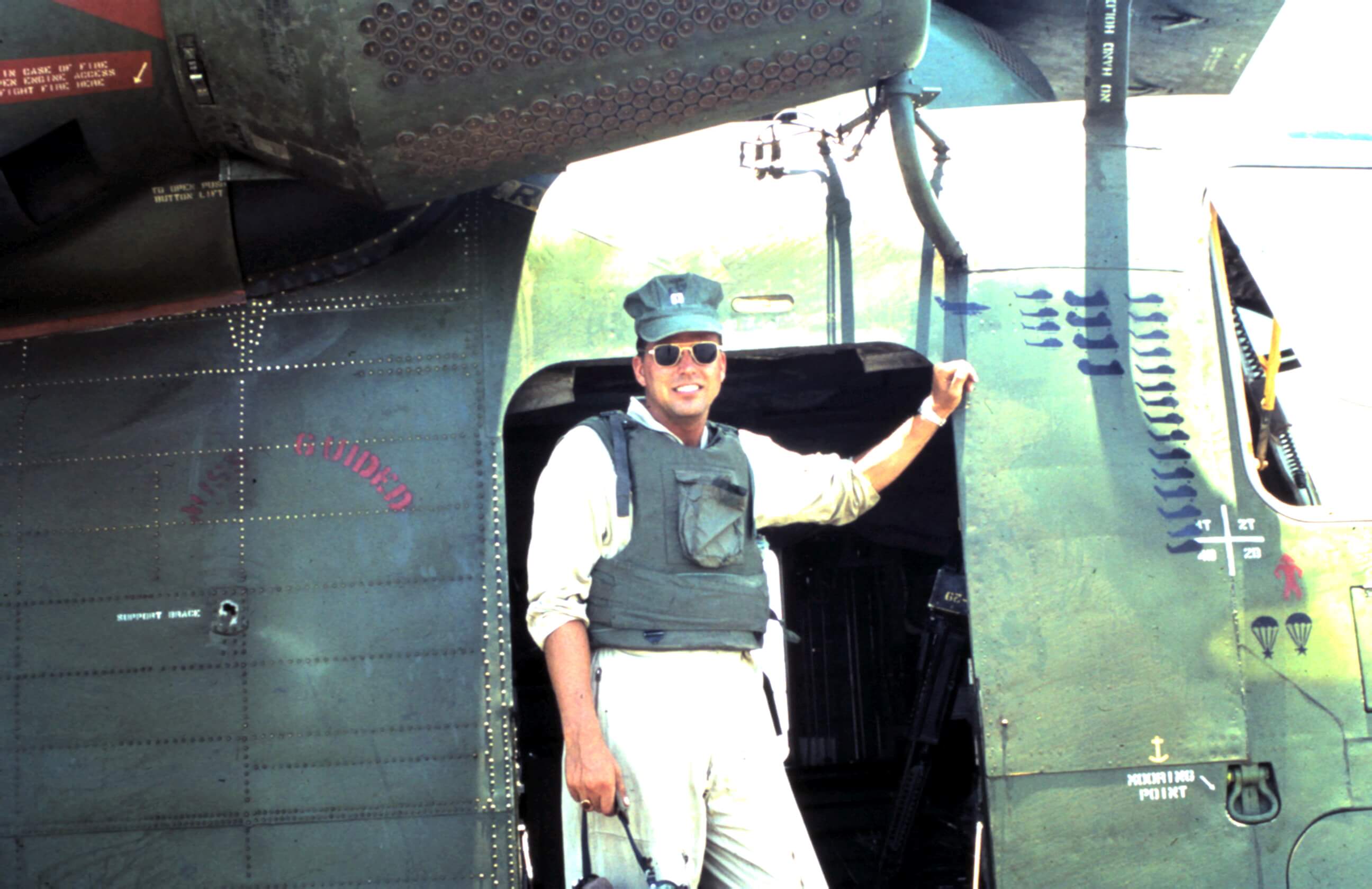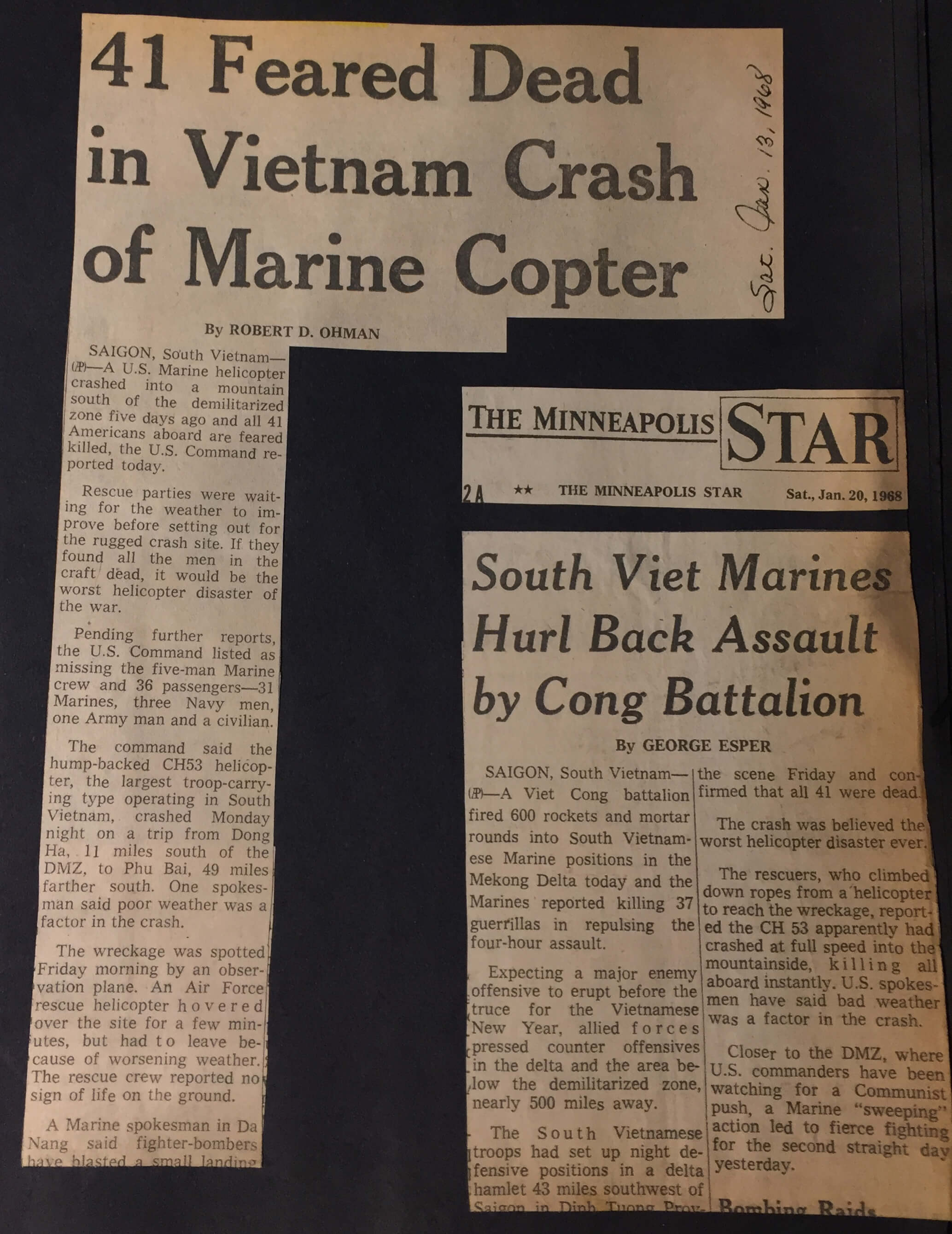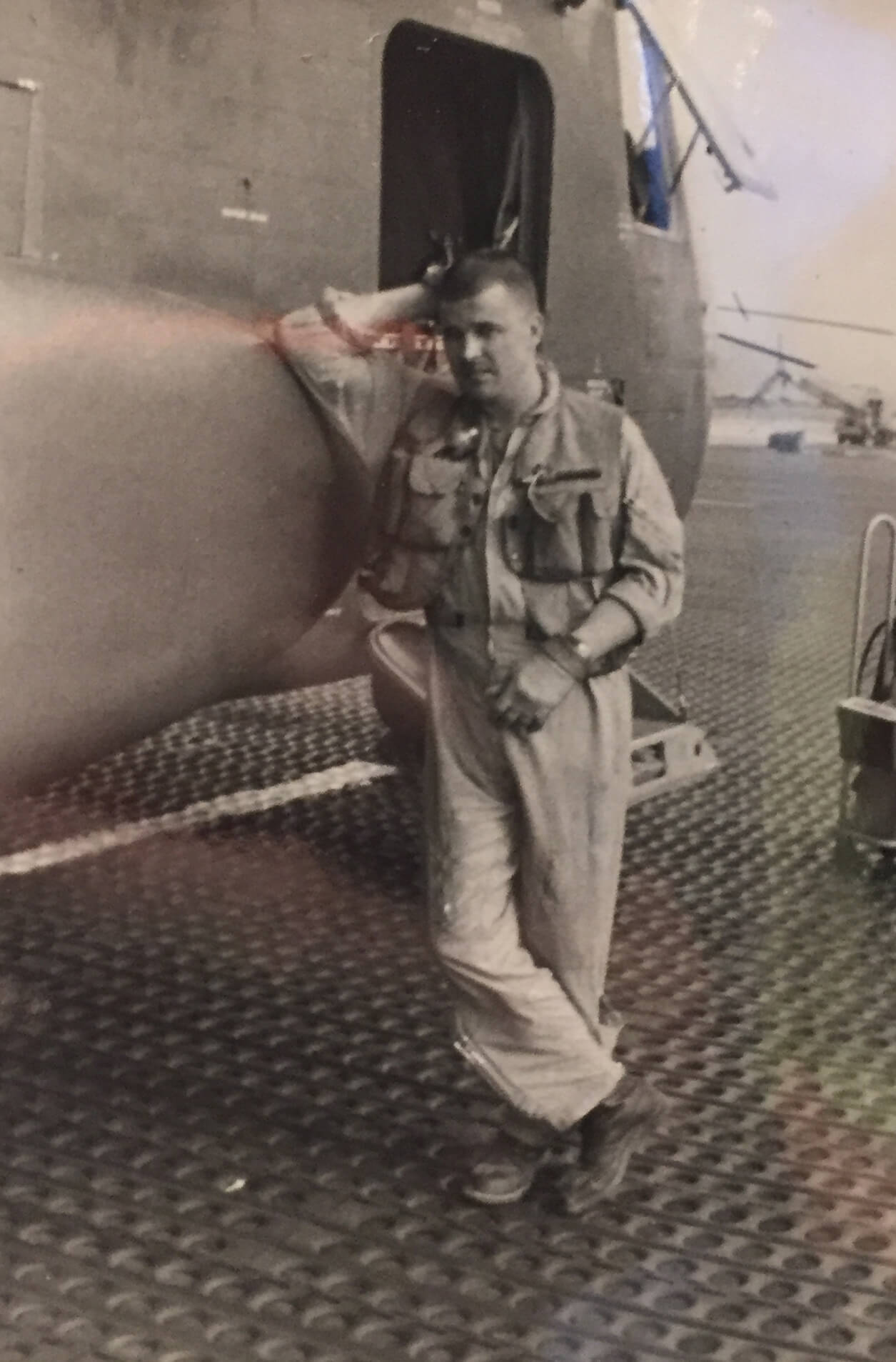
 A Minnesota PBS Initiative
A Minnesota PBS Initiative
That helicopter is what saved my life. It was more powerful, faster, could climb like crazy. I miss flying that aircraft every day, it was that good.
As a kid, Jerry McClees remembers watching the airplanes at Wilt Chamberlain Airport and being fascinated. He knew that he wanted to be a pilot someday. During college, he knew one way or the other that he was going to be in the military. He was drawn to the Marine Corps because of the strong camaraderie that he saw, and, he admits, the good-looking Marine Corps 'Dress Blues.'
He and his wife Jackie weren’t going to get married until he got his wings, because they were shipping people to Vietnam 6 weeks within of getting their wings. So they decided to get married while he was in flight school. "It was the helicopter war," he says, and he was encouraged to become a pilot in a brand new squadron created for a brand new helicopter.
Jerry says, “That helicopter is what saved my life. That helicopter got me out of trouble that other helicopters wouldn't have. It was more powerful, faster, and it could climb like crazy. I miss flying that aircraft every day, it was that good. The CH 53 C Stallion. We were the first squadron in combat with that helicopter.”

If you look at the picture you will see the silhouettes of helicopters... one of our missions was recovering aircraft that had been shot down. The crew chiefs would put the the aircraft on the side of their helicopters to show how many it had recovered.

During the Vietnam War, the highest number of helicopters were shot down between 1967 and Tet of '68. Jerry says, "The worst helicopter crash in Marine Corps and military history happened in our squadron." 43 died and are buried at Jefferson Barracks National Cemetery.

Jerry's squadron has a reunion every 2 years. "Jackie calls the reunions my mistress," he says, as the veterans share stories they can only share with each other. He says that the experience for some, is closure.
Jerry recalls an unforgettable moment during his service which required a troop extraction on top of a ridgeline. The helicopter, which normally carried 38 troops, had to carry 79 people out that day. The dangerous mission required improvisation, quick-thinking and skillful manuevering of the aircraft to get it off of the ground.

Jerry encourages people to say "Welcome home," to veterans, as it means a lot to those who did not feel welcomed upon their return from serving during the Vietnam War.


This is the version of helicopter I flew in Viet Nam. This is in Hawaii where my old squadron ended up after the war.
SIKORSKY CH-53A (H-53A) "Sea Stallion"
Ordered in August l962 for service with the Marine Corps, the CH-53 "Sea Stallion" was the largest of all Sikorsky helicopters at the time of development with a huge load carrying capability in a fuselage comparable to conventional fixed-wing designs. Equipped with rear loading doors and controlled winches at the forward end of the hold, the CH-53 could successfully transport either a one and a half ton truck and trailer, a Hawk missile system, an Honest John missile and trailer, or a 105 mm howitzer. In a troop carrying configuration, it could accommodate thirty-eight fully equipped troops or twenty-four stretchers (later versions could carry up to fifty-five troops). The "Sea Stallion" was also fitted with a watertight lower section for emergency water landings and all but the first thirty-four models were fitted with hard points for towed minesweeping equipment. Later versions had folding main and tail rotors for shipboard operations. The first of 265 production models was first flown on 4 October l964.
September l966, variants of the "Sea Stallion" were ordered by the Air Force for search and rescue operations in Viet Nam and became known as the "Super Jolly Green Giants". The first deployment of the CH-53 with the Marines occurred in January l967. Thereafter, Navy and Marine Corps pilots/crews flew CH-53s for the remainder of the Viet Nam Conflict on transport and logistic missions. A noteworthy occasion in the history of minesweeping operations occurred on 27 February l973 when CH-53s began airborne sweeping for live mines in North Viet Nam harbors and shipping channels. This was later duplicated in efforts to locate mines and explosive devices in the Suez Canal as part of the overall operations to open that vital waterway for safe passage of ships.
Story Themes: Grief, Helicopter, Jerry McClees, Love, Marine Corps, Pilot, Reunion